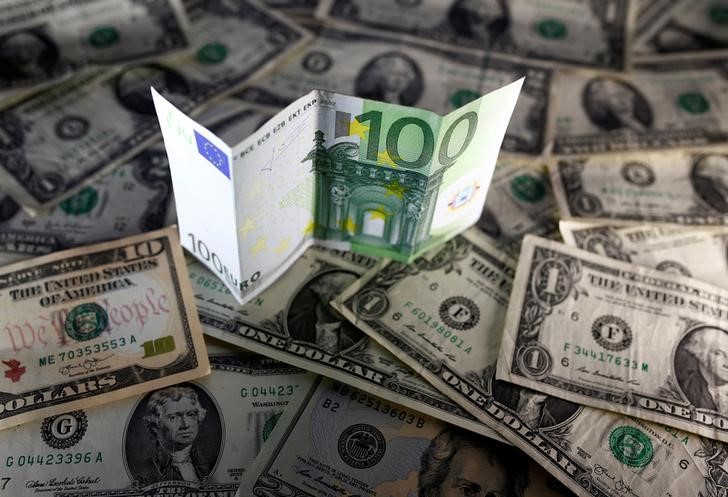By Jamie McGeever and Anjuli Davies
LONDON (Reuters) - European banks had mixed fortunes in fixed income, currency and commodity (FICC) trading in the first quarter, but aggregate results reveal the big players were not far behind U.S. rivals.
While total FICC revenue at Wall Street's top five banks rose by almost a quarter in the period, seven of Europe's top banks together delivered 20 percent growth, data compiled by Reuters shows.
This was in large part thanks to BNP Paribas (PA:BNPP) and Societe Generale (PA:SOGN), which reported FICC gains of 32 percent and 13 percent respectively.
"The willingness to deploy leverage exposure into CIB/Global Markets is paying dividends," Barclays analysts wrote in a note on BNP Paribas, adding that the French bank's revenue performance showed it was delivering market share gains.
HSBC (L:HSBA) posted a drop in foreign exchange income, but said its rates revenues rose by 53 percent and credit revenues more than doubled.
However, the European average is inflated by a 59 percent surge at Credit Suisse (S:CSGN) which was in large part due to the low base the Swiss bank started from after making dramatic cuts to its FICC business in recent years.
And Deutsche Bank AG (DE:DBKGn), another of Europe's big trading houses, saw revenue from bond dealing rise by just 11 percent, once again from an extremely low starting point.
"As a result of our business mix and the business parameter decisions we have taken, including, in particular, the downsizing of securitized trading, we believe we benefited less in this quarter from spreads tightening as our market making inventories are smaller than those of U.S. peers," Marcus Schenck, Deutsche Bank's CFO said following its results.
While Britain's Barclays (L:BARC) missed the party with a 14 percent slump in income from its macro trading business, the average rise in FICC trading among the top five U.S. banks was 24 percent, even with a 1 percent rise at Goldman Sachs (N:GS). "Obviously we would have liked to have done better," Barclays chief executive Jes Staley said last week, adding that volumes were reasonable in the U.S. rates business, but the bank "just didn't trade as well as we would like to".
INVESTMENT NEEDED
The first three months of 2017 should have been an active and lucrative period for FICC trading desks, but European banks struggle unless they are willing or able to use more capital.
The global 'reflation' trade propelled markets in January on expectations new U.S. president Donald Trump would cut taxes, deregulate the banks and boost fiscal spending.
That trade started to deflate as doubts crept in about Trump's ability to deliver, prompting bond yields and the dollar to fall. And as economic data softened, expectations of how high U.S. interest rates will rise this year were pared back. Rising inflation also brought forward bets on when the European Central Bank and the Bank of England might raise rates. All of this was set against the volatile political backdrop of Trump's first 100 days, a U.S. attack on Syria, deepening tensions with North Korea, the start of Britain's two-year negotiation to leave the European Union and a heavy election calendar in Europe.
For European banks to do better, they need to invest again in FICC trading, some analysts say.
"European banks have been retrenching in FICC, so investing in some more talent and better technology would certainly help," Jasper Lawler at London Capital Group said.

"The real or perceived higher counterparty risk when dealing with European banks means they are unlikely to bridge the gap with the U.S.," he added